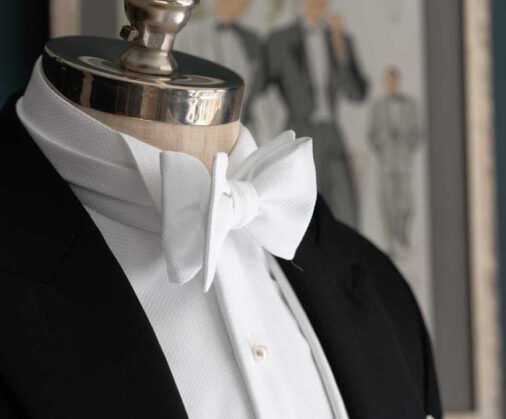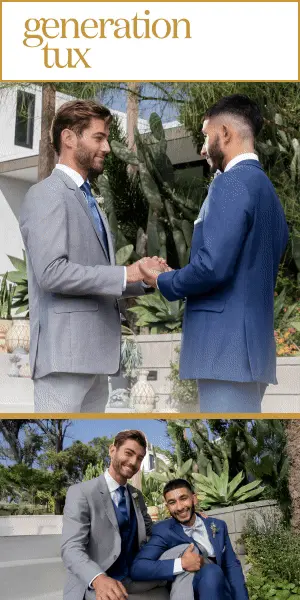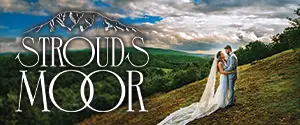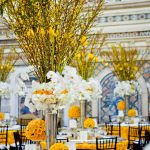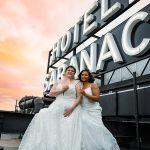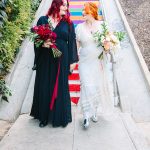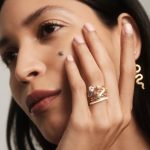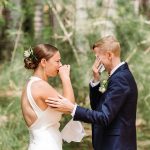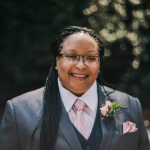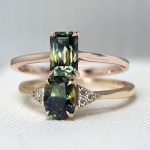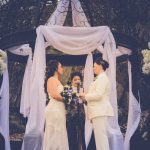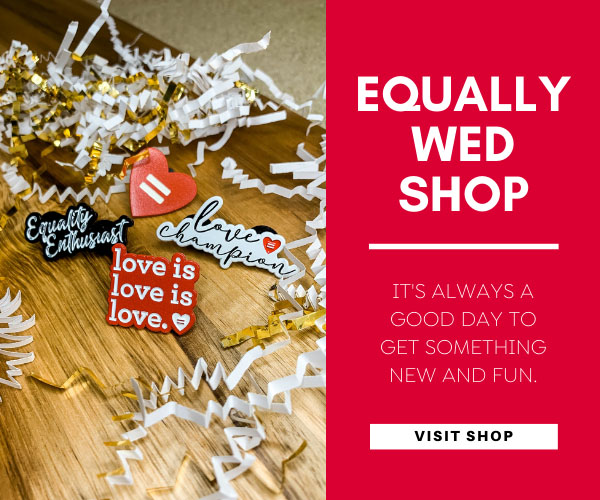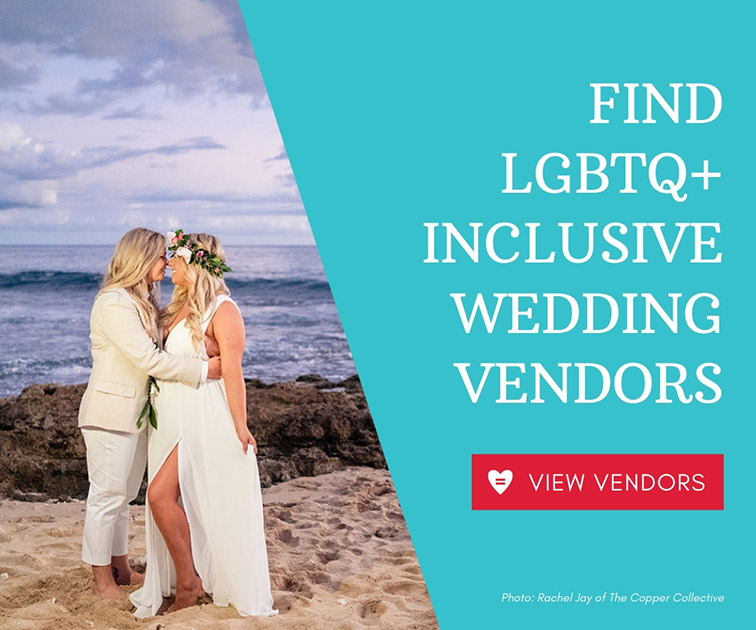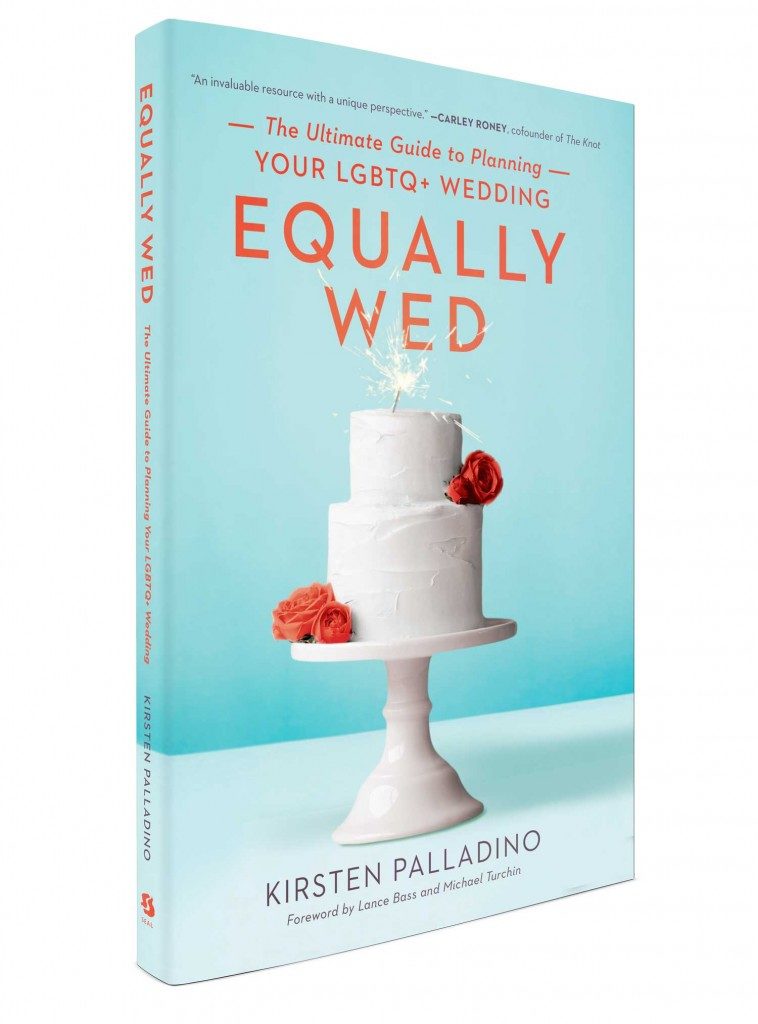Full evening dress (also referred to as “white tie”) is the most formal dress code there is and mostly reserved for royal ceremonies or balls. However, increasingly in the U.S. some wedding parties are opting for the grand gesture of dressing up, so it’s best to be prepared. Fashion Designer and Influencer, Simon Goldman @simon_gold, breaks down the elements of a perfect white tie ensemble.
“When an invitation reads “white tie” it’s setting a very specific standard for a tailcoat with a required cut and accessories so prescribed that it takes a very experienced tailor to make, and nothing else will do.” explains Steve Knorsch, Managing Director USA, Cad & The Dandy.
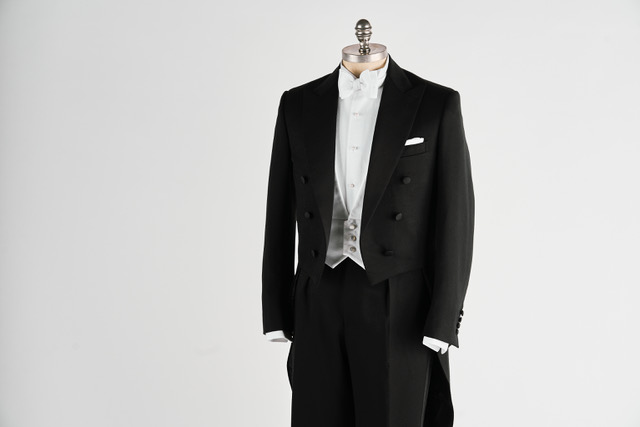 Photo: Mitchell Vito Helson
Photo: Mitchell Vito Helson
White Tie
- A tailcoat in black barathea, designed to contour the body made with black silk facings. The front is worn unbuttoned, and each side is cut to angle slightly downwards to form points just below the waist. The tails themselves fall to the back of the knees and the back is contoured to closely fit the torso.
- A white Marcella waistcoat traditionally cut low in a deep V with a three-button front closure and either square or blunt-ended narrow lapels. The front quarters of the coat should be cut to always cover the bottom angle of the waistcoat.
- Unlike tuxedo (black tie) trousers, white tie trousers have a double stripe down the outseam. Trousers are often made with single or double inward-facing pleats and a fishtail back, high-waisted designed to be worn with braces, and finished with uncuffed hems.
- A full evening dress shirt, wing-collared with a Marcella bib front, worn with shirt studs instead of buttons and double or single cuffs with matching cuff links.
- A matching white Marcella bow tie – either butterfly or batwing shape – sits in front of the collar wings, never behind them, and should always be hand-tied.
- As for footwear, formal low-cut pumps in black calf or patent leather with a bow are worn with plain black silk over-the-calf hose.
- A black silk top hat is traditionally the correct head covering.
Photo: Cad & The Dandy
Maria (Mo) Palladino
With more than 20 years of experience and the co-founder and creative director of Equally Wed, Equally Wed Pro and Equally Family, Maria (Mo) Palladino (she/they) has been immersed in weddings and events for 13 years, and is internationally recognized for being instrumental in bringing LGBTQ+ weddings to the forefront of the wedding industry. They have been profiled in The New York Times, interviewed by various publications and podcasts such as Atlanta Magazine, The New York Times, AARP, The Wedding Biz and more, and interviewed as an in-studio guest on CNN. With Maria’s design and development, EquallyWed.com was a 2018 Webby Award nominee. They are a sought-after speaker who provides inspiration and education to allies and the LGBTQ+ community alike.
MOST VIEWED STORIES
- Lemon party inspiration from Engage!25 Santa Barbara
- Your 2026 Wedding Planning Playbook: Decoded from the Year’s Trending Google Searches
- Supreme Court Declines to Hear Marriage Equality Case
- From Swipe to Soulmates: How Daniel & Michael Found Love After a Life-Changing Spinal Cord Injury
- Brighten Your Smile: 5 Teeth Whitening Options for Your Engagement Photos and Wedding Day



